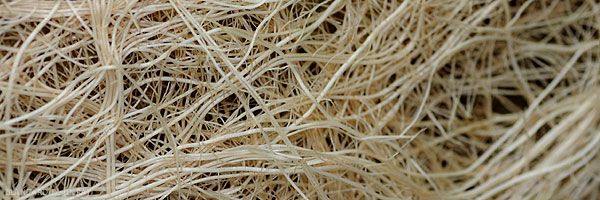
Agrobacterium radiobacter
Root mat is a relatively old disease since it was initially described in the 1970s in the United Kingdom, and associated with a strain of Agrobacterium biovar 1, in cucumber crops in sheltered soil. It was only observed in this country on tomato from 1997, mainly in above-ground cultivation where the number of affected plants varied between 1 and 50%. A. radiobacter strains carrying a "Ri" (root-inducing) plasmid were responsible. In fact, root symptoms are induced by the transfer and expression of this plasmid in the genome of tomato cells. More recent studies have shown that the plasmid "Ri" is also present in other bacterial species associated with root mat and belonging to other genera - Ochrobactum, Rhizobium, Sinorhizobium. These species could play a significant epidemiological role in the disease. Note that root mat is now reported in several other European countries such as the Netherlands, France...
The affected plants have a rather linear root proliferation in and on the surface of rock wool cubes and loaves (photo 514), which leads to an increase in vegetative growth of tomatoes at the expense of fruiting. Note that the fruit size can be reduced. In addition, the density of the roots makes them much more sensitive to attacks by fungi present in above-ground crops, especially to chromists (Pythium spp., Phytophthora spp.).
These root proliferations are due to the effects of strains of A. radiobacter biovar 1 housing a circular DNA fragment, a plasmid cucumopine "Ri", root inducer. Indeed, this bacterium, as in the case of A. tumefaciens, plays the role of vector and transmits this plasmid that will fit into the genome of plant cells. Subsequently, root production is totally disrupted, the plants producing in an anarchic way. The incubation time of this disease seems quite long, approximately 4 to 8 weeks. The isolation and identification of this bacterium is quite difficult and requires the intervention of a specialised laboratory (mmid can be detected by PCR).
It is quite difficult to control this disease in above-ground tomato crops. Indeed, there is no product to carry out effective and approved treatments during cultivation. Only several hygiene measures can be implemented in nurseries and during cultivation to limit the conservation and proliferation of this bacterium:
Carefully clean and disinfect nurseries and shelters with a disinfectant. Between two crops, the material used in greenhouses should not be stored on the ground or in a dirty environment because it may become contaminated on this occasion;
Soil disinfection will often be illusory because this bacterium is easily preserved there and recolonises it quickly;
The loaves must not be in contact with the ground and the drippers must be suspended;
When the plastic covering the ground is replaced, it will be necessary to be particularly careful so that the new one is not soiled with soil dust on its upper side.
Attempts to disinfect steam breads have proven effective in killing the bacteria, but not the infectious plasmid. Let's remember that this solution is not recommended in countries affected by root mat.
It should be noted that a fairly comparable condition, called "thick root syndrome" and whose origin is unknown, is reported in particular in the Netherlands, mainly in cucumber, pepper, tomato nurseries. It results in excessive root growth that also tend to roll up irregularly and take on a vitreous appearance. Their diameter is sometimes considerable (at least ten times larger than that of a normal root), and they end up decomposing. Note that they are much more sensitive to the attacks of Pythium spp.





